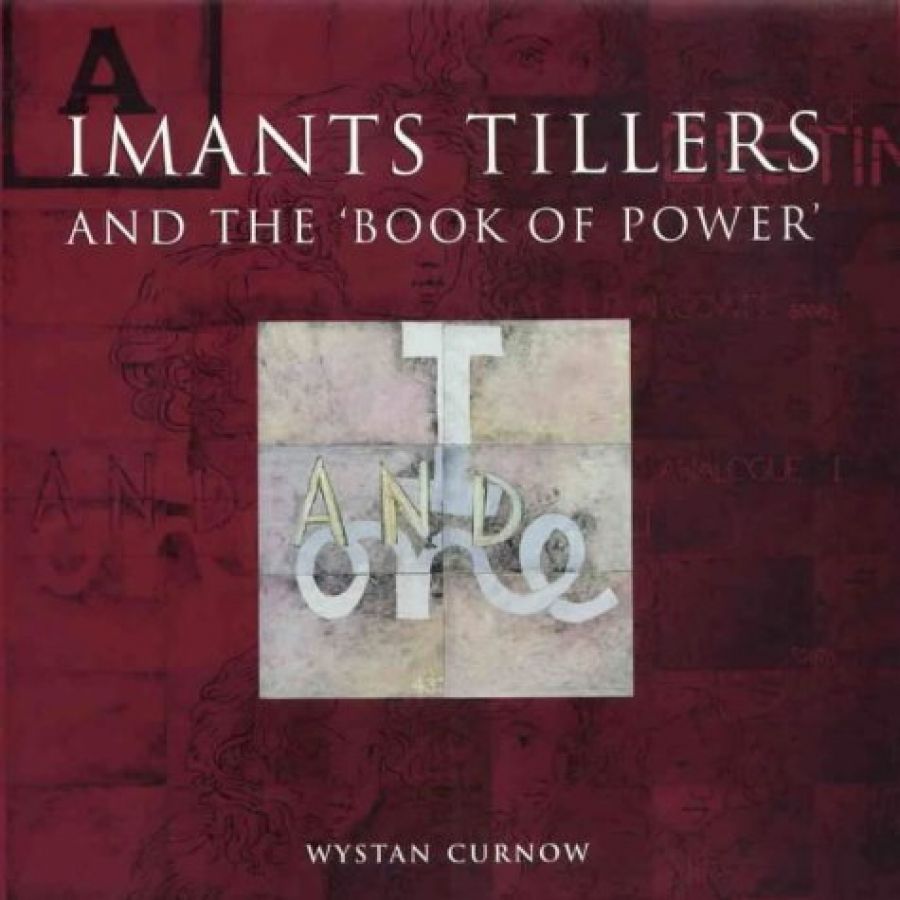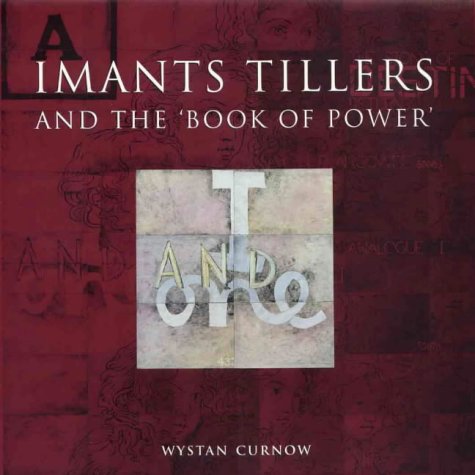
- Free Article: No
- Contents Category: Biography
- Review Article: Yes
- Article Title: Ironic Iconoclast
- Online Only: No
- Custom Highlight Text:
Imants Tiller is one of the most distinguished of Australia’s postmodern generation of artists. Just about every trendsetting exhibition within Australia throughout the 1980s had a Tillers piece on centrestage, and his inclusion in internationally touring shows then and in the 1990s has been a matter of course. His commercial success has matched his fame and his prodigious output. But Tillers’s high profile and fashionable appeal are contradictory phenomena. For an artist whose work is declaratively derivative – brashly quoting, awkwardly imitating or strategically appropriating other artists’ imagery – Tillers has nonetheless managed to develop a signature effect in his working method which is inimitable.
- Book 1 Title: Imants Tillers and the Book of Power
- Book 1 Biblio: Craftsman House, $80 hb, 172 pp
- Book 1 Cover Small (400 x 600):

For the past two decades Tillers has presented his work, with mannered detachment, as a boundless set of jigsaw pieces. Each individual work is a momentarily coherent mosaic made from the multitude of small store-bought canvas boards he paints on. And these are assembled for exhibition in much the same way that Tillers paints. By numbers. Although he celebrates suburban amateurism and provincial mediocrity, suggesting (after the ironically self-deprecating words of German artist Martin Kippenberger) that Australian art can be ‘the best of the second-raters’, Tillers’s work has an undeniably slick, cosmopolitan and competitive internationalist look. The paintings – usually large scale when assembled-appear to be details of a dense and rich palimpsest, fabricated as obscure citations from or allusions to contemporary and historical art, both high and low. Yet, the index to this arcane text amounts to an art world game of trivial pursuit, which suggests that Tillers’s style may be more camp than cool or cerebral.
This is a surprising idea, and probably unwelcome to those devotees of Tillers who see him as either a sardonic wit or a melancholic. It would be especially distasteful to the New Zealand critic and poet Wystan Curnow, whose detailed, poetic monograph on the artist is almost breathless in adoration of both the humour and pathos in Tillers’s work. But if this camp aspect of Tiller’s art is not exactly apparent to Curnow, it must certainly become evident to his readers as they plough their way through the book’s last seventy pages of exegetical commentary on the Book of Power, Tillers’s name for his own oeuvre (an infinitely numbered copy, says the artist, of every work of art in the world) in advance of its impossible completion. Drawing on the exhaustive directory of the artist’s citations which has been continuously kept by Tillers’s archivist and wife, Jennifer Slatyer, Curnow spells out some of the intricate connections within this constantly expanding universe of quoted imagery.
In a minor example, the 1988 piece Faith (a deadpan image of the word ‘faith’ in Badoni Italic typeface against a flat background) is a copy of US Pop artist Ed Ruscha’s work of the same title. ‘One of few Ruschas in Tillers’s Book,’ Curnow explains, ‘five renditions of it are nevertheless to be found there.’ What Tillers’s responded to, albeit ‘peripherally’, in this deadpan image was Ruscha’s unwitting resort to the colours of the Latvian flag. Drawing upon his own Latvian descent (although presumably in the second-degree), Tillers’s added a spare little decorative motif which would probably be unrecognisable to anyone other than a specialist in Latvian folk culture. Thus, without changing it in any substantial way, declares Curnow, Tillers has dramatically transformed Ruscha’s unassuming, wry comment on fading belief and idealism into a bold flag, ‘honouring the extraordinary resilience of a culture which for the past 700 years has been under more-or-less continuous domination by others’.
Borges’ celebrated invention of the tragic novelist Pierre Menard, who transfigures Cervantes’ Don Quixote when he unwittingly rewrites it word for word, would surely not be unfamiliar to either Tillers or Curnow. In the 1980s, for many artists and critics obsessed with the logical tangles of appropriation, the textual ironies unleashed by Menard made this character an emblem of postmodernism. But, to paraphrase Marx, what may have been tragic at first becomes farce when it is repeated. The beguiling hypothesis in Borges’ fantastic story is spun as a scam when it is doubled in Tillers’s art. That’s hardly a complaint against Tillers; after all, the artist has been only too happy to demonstrate that from the start of his career his art has been an ambitious, grand parody of the cultural institutional systems which have granted him artistic repute and financial success. The absorbing and encompassing nature of the parody – it seductively supplants the real art world with a nonsensical simulation – indicates that Tillers’s sense of irony is not reformist but cynical; even, one dares say, nihilistic.
Curnow’s interpretations of Tillers’s works either impress as far-fetched and even fantastic (often, almost naively, explicating preposterous coincidences of peripheral details) or they sound ponderous and banal (poetic glosses on dull inventories of motifs). Because Tillers’s art is a project to copy every work of art in the world, including presumably Tillers’s own work, it follows (in a perverse way) that everything in Tillers’s art is ultimately connected to every other work of art. The critic’s task, and Curnow performs it, is to explicate that hypothesis by demonstrating that what connects everything is the artist himself – or at least his nonsensical simulation as author of the Book of Power, both a document of the artist’s life work and a travesty of it. This is something like a black hole, in which the universe of art contracts to the blank singularity of Tillers’s dubious authorship. ‘A life,’ Tillers himself declares (citing – Curnow points out – Ed Ruscha, On Kawara, Beckett, de Chirico, etc. etc.), ‘of blank.’
Curnow’s critical insights are many and are delivered for the most part in stylish prose. But he is too close to the black hole. Although extensive in scope, his historical research (especially of Tillers’s early career) seems thin and his critical interpretations appear reliant on the artist’s own archival documentation. While hardly gullible, this does render Curnow’s book more as a work of publicity than analysis. As if he is party to the scam, Curnow admits this: his own monograph is itemised as No. 50,000 in Tillers’s Book of Power. In an infamous Neo-Dada gesture, the American painter Jasper Johns purchased in 1953 a Willem de Kooning drawing which he then rubbed out and exhibited as his own work. Descriptively titled Erased de Kooning Drawing, this faintly smeared blank sheet is like an infuriating optical illusion. It is unarguably both artists’ work, yet only because there is nothing there. This is the sort of ironic iconoclasm from which Tillers’s art – or at least the best of it, and that would mean the most malicious and camp – produced.


Comments powered by CComment